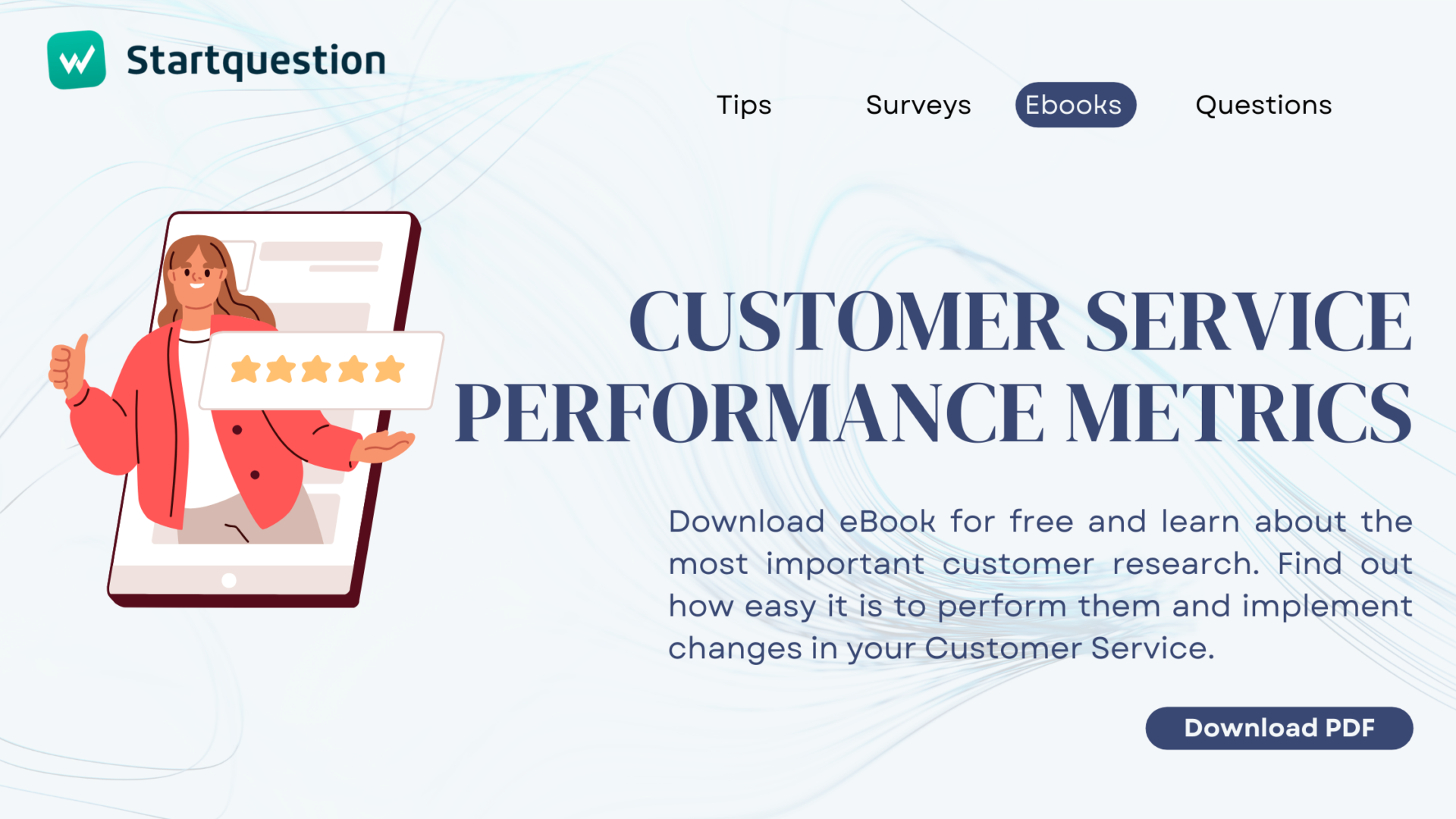Writing good survey questions is crucial in data collection and analysis. A well-designed survey can provide actionable insights, while poorly constructed questions may lead to unreliable data and lopsided results. In this comprehensive guide, we will explore the impact of poorly designed survey questions, offer tips for crafting excellent and unbiased questionnaires, and provide examples of valid survey questions.
Before we dwell on bad survey question examples, let’s introduce a concise definition of our considerations’ target state.
What Is a Good Survey Question?
It is short and comfy. And in our industry, it is also part of something bigger, whether you’re into CX, HR, or market research.
Creating clear and concise survey questions is crucial to getting qualitative data and valuable answers from your target audience, which can help you improve your business. Useful insights can help you tailor your product or service to better meet your customers’ needs, leading to increased satisfaction, loyalty, and, ultimately, higher revenue.
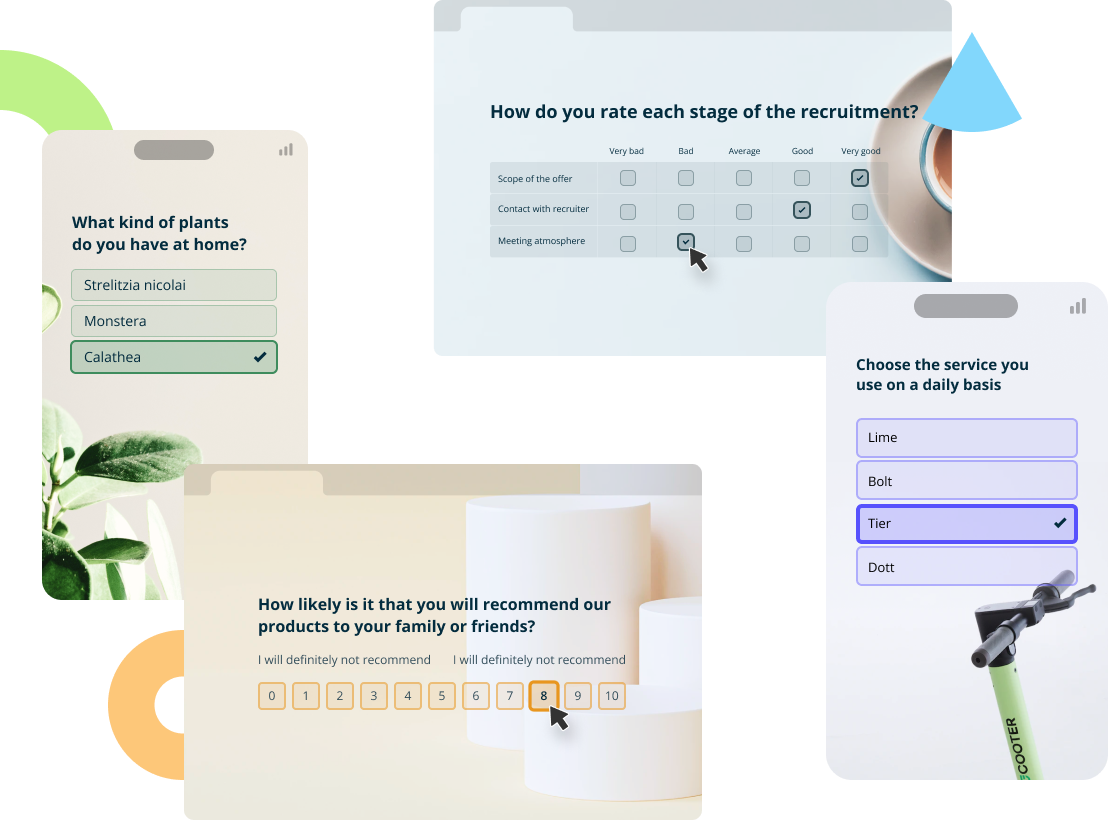
We already know what we are striving for.
Now, let’s see what mistakes to avoid when writing survey questions so that your questionnaires have a high response rate and help you collect data of high quality.
How Bad Survey Questions Impacts Results
Hey, Ed Sheeran warned us all singing:
“My bad habits lead to late nights ending up alone.”
Translating the artist’s words into the language of survey online organizers, we would say that bad habits (or common mistakes) in the survey creation process can lead to a low response rate, bias in survey responses, and consequently to low-quality feedback, and bad decisions made on their basis.
We don’t want that, do we?
How Not to Write Survey Questions [Examples]
Poorly designed survey questions can negatively impact data quality and accuracy. Here are some ways they undermine survey results:
- Biased Responses
Leading or loaded questions can unintentionally sway respondents’ answers, resulting in biased data. “Don’t you agree that our product is the best in the market?”
- Ambiguity
Vague or ambiguous questions can confuse respondents, leading to inconsistent or inaccurate responses. “How often do you use our services?” (Without specifying the timeframe or defining what constitutes usage).
- Double-Barreled Questions
Double-barreled questions combine two distinct inquiries into a single question, making it difficult for respondents to provide accurate answers. “How satisfied are you with the quality and price of our product?” (The respondent might be satisfied with one aspect but dissatisfied with the other, leading to a misleading response).
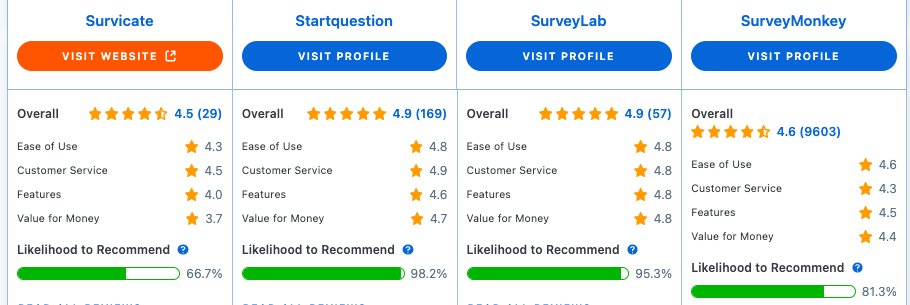
- Low Response Rates
Lengthy or poorly structured questionnaires with confusing questions can discourage survey respondents and lower response rates. “Please rank the following 50 features of our product from most important to least important.”
- Misinterpretation
Questions that are poorly worded or lack clarity can be misinterpreted by respondents, leading to erroneous data. “Are you satisfied with our services?” (Without specifying what aspect of the customer satisfaction we want to ask about).
- Ineffective Analysis
Poorly designed surveys can make data analysis challenging, hindering the extraction of meaningful insights. “What improvements would you suggest?” (Without providing specific options or categories for improvement).
Ensuring the reliability and validity of survey data is crucial for informed decision-making and actionable insights. By designing survey questions mindfully, you can avoid common pitfalls and receive the most accurate and bias-free possible answers.
Here’s how you can do it.
Tips for Writing Good & Unbiased Survey
Now that we understand the pitfalls of wrong survey questions, let’s explore some tips for crafting effective and unbiased survey inquiries. To collect reliable data remember to:
Decide What You Want to Ask First
It’s essential to clearly define the objectives of your survey. This will guide the development of the questions and ensure that each question contributes meaningfully to your research goals.
For instance: Studying the satisfaction of participants of Ed Sheeran’s concert.
Keep Your Questions Short and Simple
Long and complex questions can overwhelm respondents and lead to respondent fatigue. Keep your questions concise and easy to understand to improve response rates and data quality.
For instance: Rate your overall satisfaction with the concert on a scale of 1 to 5 (rating scale question).
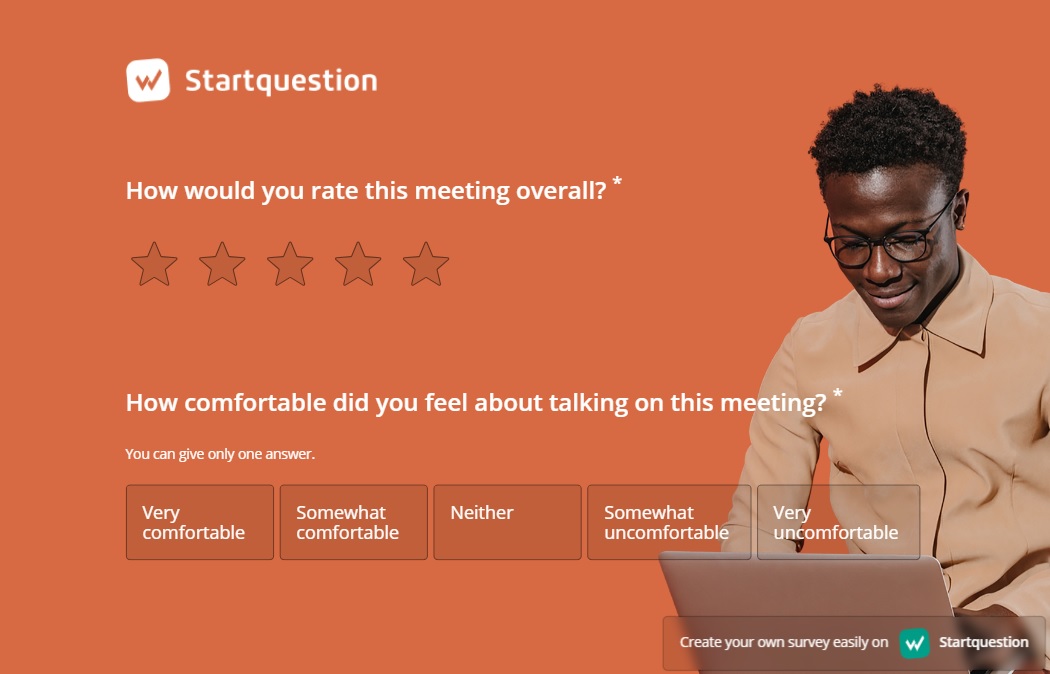
Ask About Only One Issue in One Question
Asking more than one question at a time in a single sentence can confuse respondents and produce inaccurate data. To ensure clarity and accuracy, ask one question at a time.
For instance: How do you rate the sound system in the concert hall?
Use Varied Forms of Survey Questions
Employ a variety of question formats, including multiple-choice, Likert scales, rating scale questions, matrix, and closed-ended questions. This diversity keeps the survey exciting and ensures different types of information are collected.
For instance: Instead of providing descriptive answers, allow respondents to indicate their satisfaction by indicating a specific facial expression (from sad/angry to happy).
Avoid Too Many Open-ended Questions
While open-ended questions can provide valuable qualitative insights, they can also be time-consuming to analyze. Strike a balance by incorporating a mix of closed-ended and open-ended questions.
Set Some Questions as Optional
Respect the time of respondents by allowing them to skip irrelevant questions. Optional questions can increase response rates and help you collect more both qualitative and quantitative data.
Keep Questions Different from Each Other
Make sure each survey question serves a unique purpose and contributes to overall objectives. Avoid repetition to keep it concise and engaging. And never ask about things you already know about your target audience.
Be Direct with Your Questions
Use clear and straightforward language to minimize confusion and ensure respondents understand the intent of each question. Avoid jargon or complex terminology that may alienate certain participants.
For instance: Will you go to the artist’s concert again?
Make Sure to Avoid Leading Questions
Leading questions can inadvertently influence respondents’ answers by suggesting a particular response. Keep questions neutral and unbiased to obtain genuine insights from participants.
For instance: Do you want to provide additional feedback (suggestions) to the concert organizers?
Test Your Questionnaire Before Sending to Respondents
Before you distribute your survey to the intended audience, conducting a pilot test with a small sample group is highly recommended. It will help you to identify any ambiguities, errors, or issues with the question flow. Pre-testing your questionnaire is essential to ensure that it is clear, effective, and capable of eliciting the desired responses.
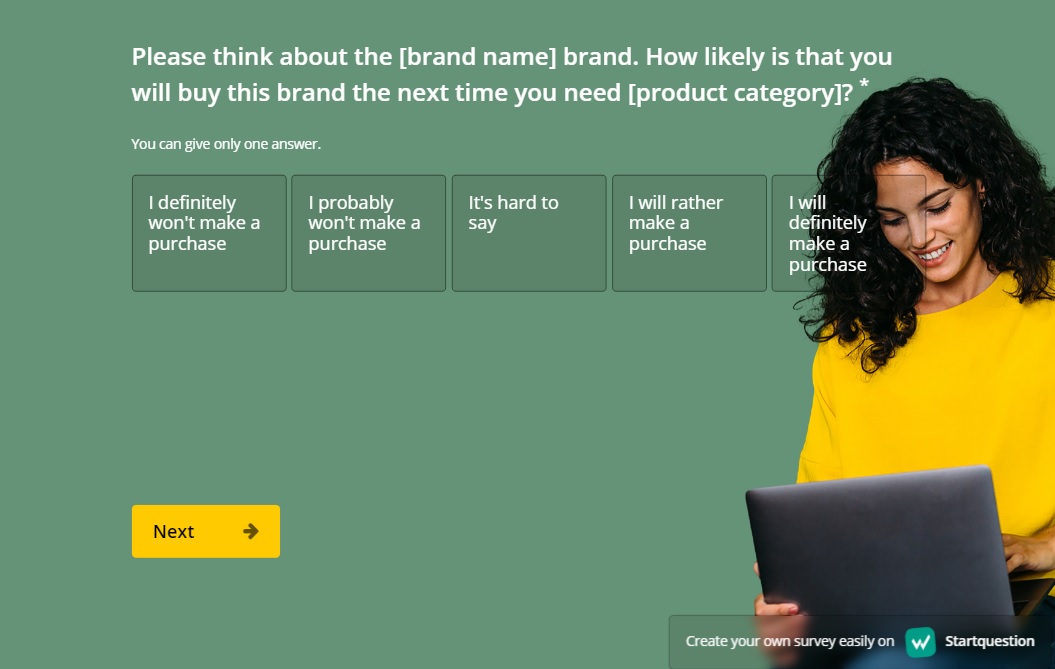
Valid Survey Questions Examples
You can never have too many examples of good survey questions. Let’s break down a few of them, leaving pop stars aside for a moment.
Research Survey Questions
- “On a scale of 1 to 10, how satisfied are you with our product/service?”
This question uses a numerical scale to measure satisfaction levels, enabling quantitative analysis.
- “Which of the following factors influenced your decision to purchase our product?”
This open-ended question allows customers to share qualitative insights about factors influencing their purchasing decisions. It facilitates a deeper understanding and enables segmentation of customer preferences.
Demographic Questions or Gender Survey Questions
- “What is your age range?”
This sensitive question example gathers demographic information about respondents’ age, which is essential for segmenting and analyzing survey data based on age demographics.
- “How do you identify your gender? (Male/Female/Non-binary/Prefer not to say)”
Offering multiple gender identification options promotes inclusivity and accurate demographic profiling.
Rating Scale (eNPS)
- “How likely are you to recommend our company to a friend or colleague? (0-10)”
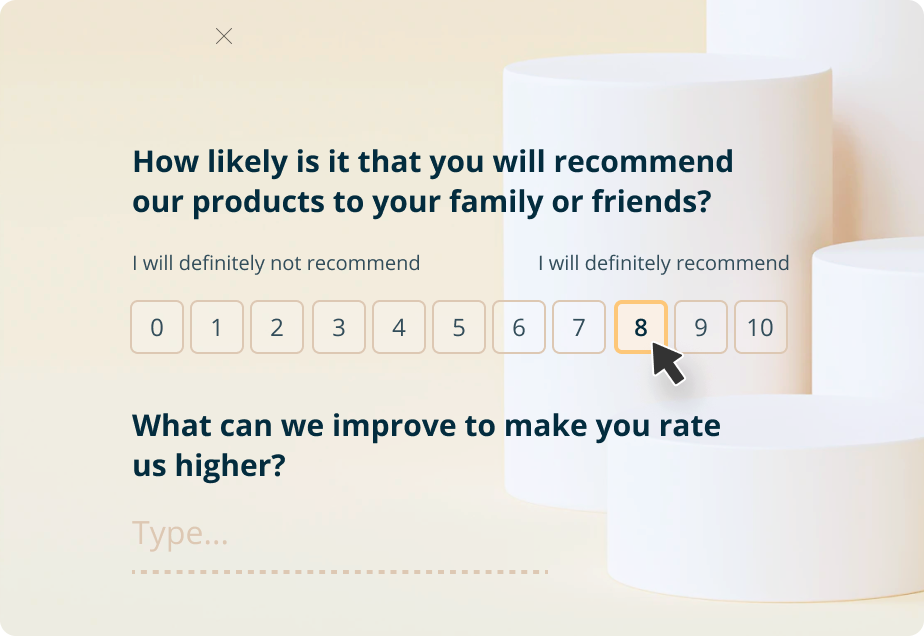
This question uses the Net Promoter Score (NPS) methodology to measure customer loyalty and satisfaction, providing a standardized metric for evaluating customer advocacy. In this case (employee NPS), it indicates the probability of a workplace recommendation.
- “Please rate your overall satisfaction with our customer service on a scale of 1 to 5.”
Respondents’ satisfaction with a specific service aspect is assessed through a simple numeric scale. This facilitates easy comparison and analysis of satisfaction ratings.
Likert Scale
- “To what extent do you agree or disagree with the following statement: ‘The company’s website is user-friendly’ (Strongly Agree, Agree, Neutral, Disagree, Strongly Disagree)”.
This Likert scale question measures respondents’ perceptions of website usability, using a range of response options to capture nuanced opinions.
- “Please indicate how often you use our product/service: (Never, Rarely, Occasionally, Frequently, Always)”.
Second Likert scale question examples allow for segmentation and analysis based on usage frequency by providing a range of frequency options to assess respondents’ usage patterns.
Use various question formats in your survey design to gather valuable data that facilitates informed decision-making and drives organizational improvements. These formats cater to information and research objectives, ensuring comprehensive data collection and analysis.
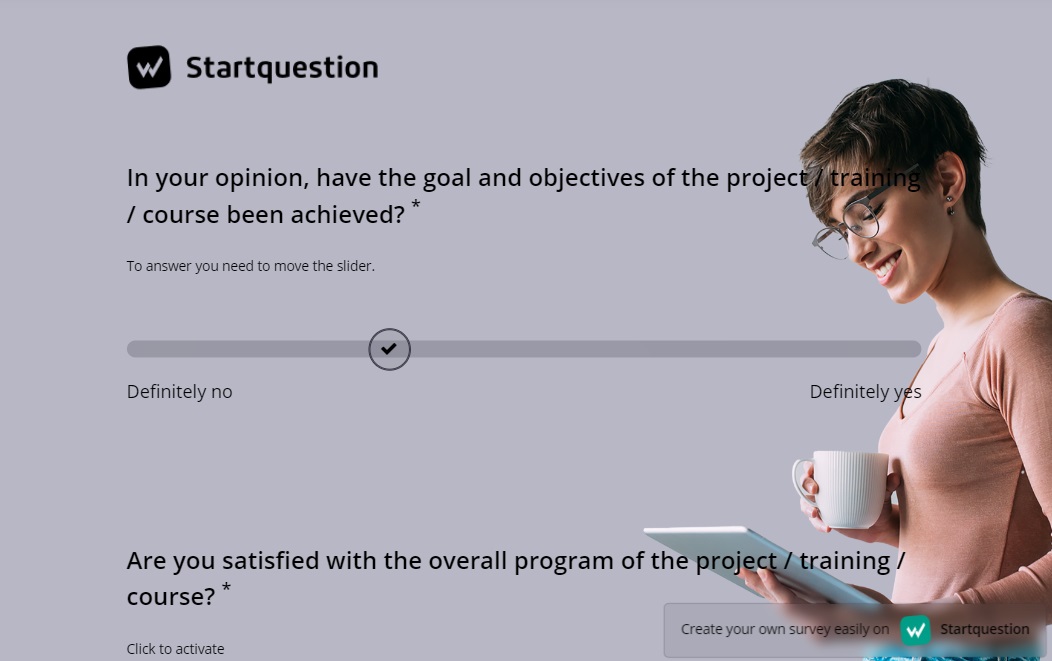
Writing Good Survey Questions – Sum Up:
In today’s data-driven world, the art and science of crafting effective survey questions are essential skills for organizations.
By following the tips in this guide and incorporating valid survey question examples, you can create surveys that provide reliable insights and drive positive outcomes for your business. Remember to prioritize clarity, neutrality, and relevance in your survey questions to ensure accurate data collection and analysis.
Get Inspired by AI & Ready-to-Use Survey Templates
Effective survey design can empower organizations to proactively meet the needs of their stakeholders and make data-driven decisions. These principles are practical tools that can enhance the impact of your data collection efforts.
So, start your survey project with these fundamental principles in mind and unlock the power of data to drive your organization forward.
Are you looking for inspiration to conquer the online survey scene like a pop star? Take a look at our +150 Survey Examples, or…




